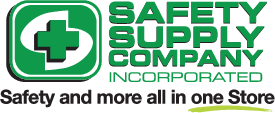If someone requires emergency care, being able to provide first aid immediately can sometimes mean the difference between life and death.
First aid can range from something as minor as applying a band-aid to a cut to life-saving measures such as performing CPR. It is usually performed immediately following an incident where the affected individual has sustained injury and the emergency services have not arrived yet.
With recent studies suggesting that one-quarter of Barbadian adults suffer from noncommunicable diseases such as diabetes, cardiovascular issues, or respiratory issues, having first aid equipment and products on hand should be a necessary function of your safety measures within the workplace.
Within the workplace, emergencies can occur at any time, and the working environment does not necessarily have to be a “high-risk” environment (i.e., filled with dangerous machinery or materials, etc.) for this to occur.
Every organization needs to have a first aid kit on hand that is situated near the working space. For example, if you have several floors in your office building, then you should have a first aid kit on each floor, for ease of access when needed.
To determine where the first aid kit should go and the type of first aid materials needed, you should conduct a First Aid Safety Assessment on your organization.
This assessment should include:
· The potential risks of your environment- chemical risk, fall risk, etc.
· The location of your business from the assistance of the emergency services.
· The health needs of your employees (are any asthmatic, have diabetes, etc.)
· The size of your organization.
· The potential needs of non-employees (visitors to the company).
· Whether there are trained or first aid certified members of staff (if you have shift work, there should at least be one member on each shift that is trained in first aid)
· The number of company vehicles that need to be outfitted with a first aid kit (especially the vehicles like delivery trucks, that employees spend large amounts of time in, as the risk of needing first aid while in the vehicle would be higher.)
In addition to having the appropriate first aid equipment, employees should receive proper first aid training, as injuries can be exasperated if care is provided by someone who doesn’t know what they are doing. Ideally, there should be at least one employee at each site, floor, and on each shift that oversees maintaining and distributing the first aid apparatus and care.
Health and Safety Committees in the workplace can assist in building the knowledge base of the employees by facilitating training drills and disseminating information on the first aid materials available at the workplace. Sharing this information can help reduce the time spent wondering if the care can even be provided by the available equipment or if they need to head straight to a hospital. Remember, every second counts in an emergency.
First aid is an invaluable skill for the workplace and oftentimes the difference between life and death. Do not underestimate the need for this knowledge, for as with all safety equipment and skills, you never know how important it is until it is needed.
You can visit Safety Supply Co. online to view our range of first aid kits and supplies.

